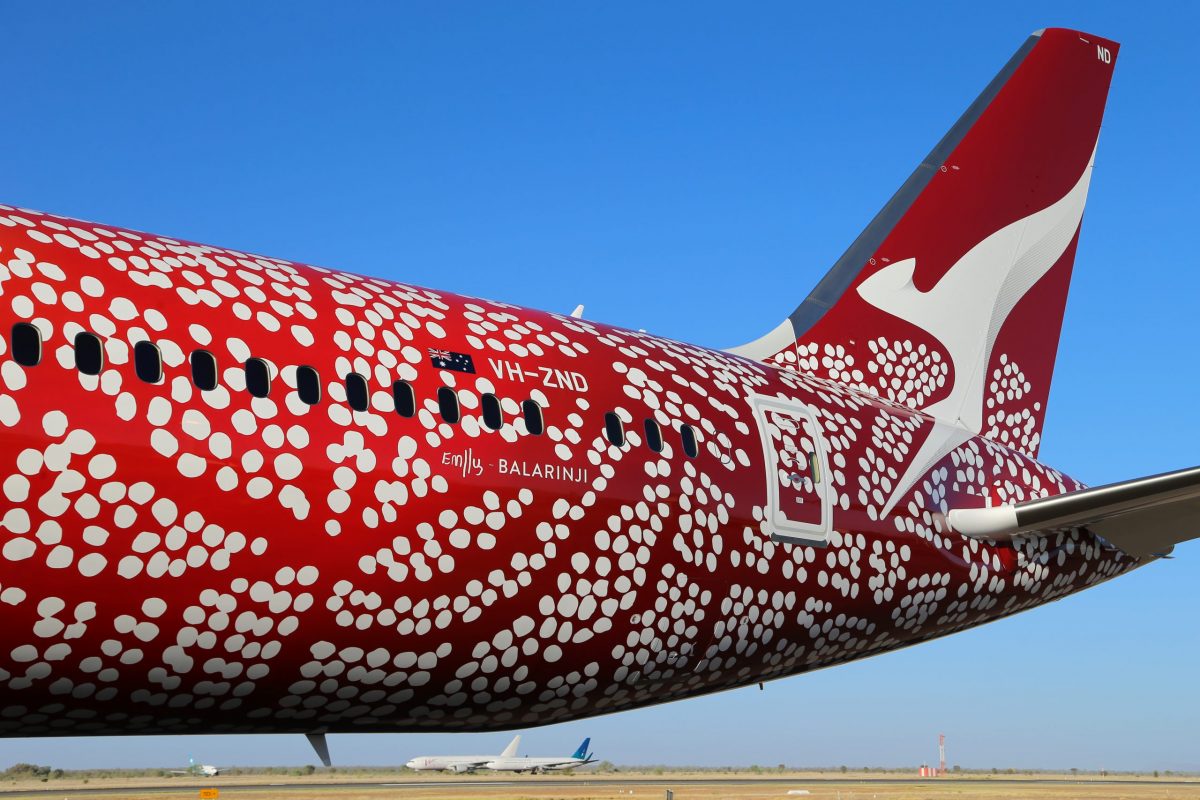Qantas’ flagship Boeing 787 Dreamliner service – QF10 from London Heathrow to Perth International Airport – returned to Heathrow on 9 February due to a suspected tail strike, while taking off in adverse weather conditions at the UK hub.

Situated 23km west of London’s CBD, Heathrow has been subjected to challenging weather conditions over the past 24 hours, due to Storm Ciara, which has brought heavy winds, rain and snow to the United Kingdom.
Operated by VH-ZND, QF10 departed Heathrow at 1 pm local time. A suspected tail strike during take-off led to the pilots electing to return to the airport rather than continue the 14,400km journey to Western Australia.
This particular aircraft carries the special indigenous livery and is named “Emily Kame Kngwarreye.”
It was delivered to Qantas in February 2018 and is often seen on the long-haul service between Perth and London – currently the worlds only direct commercial aviation link between Australia and the United Kingdom.
The airliner circled at around 2,000m, flying in a pattern between the towns of Sevenoaks and Gravesend.
It landed safely on Heathrow’s Runway 27L at around 2 pm, about one hour after departure.
#HeathrowAirport
Flight #QF10 bound for Perth, Australia, has landed safely back at Heathrow after burning fuel mid-air in a hold pattern above south-east London after suffering a suspected tail strike on take off.#StormCiaraVideo: @DjGabyG pic.twitter.com/LSelxobFpH
— London 999 Feed (@999London) February 9, 2020
“As the crew would have exceeded their maximum duty limits on the flight to Perth, the flight has been cancelled. Customers have been booked on the next available flights,” a Qantas spokesperson said in a prepared statement.
Qantas said that engineers inspected the aircraft and found no damage to the fuselage.
Storm Ciara has caused disruptions to the United Kingdom’s busy airspace, with multiple aircraft performing go-arounds at Heathrow.
Additionally, Gatwick, Luton and Stansted are all experiencing issues, with British Airways, Virgin Atlantic and EasyJet cancelling services as a result of the weather.
I've never seen anything like today at Heathrow, so many go-arounds and missed approaches! This is just 1 ?✈️#PilotSkillz #StormCíara #heathrow #storm #StormCiaًra pic.twitter.com/pFeKhjG8NK
— BIG JET TV (@BigJetTVLIVE) February 9, 2020
Additionally, airports outside of London are also experiencing similar issues, with Birmingham and Bristol among those impacted. Here, various carriers are cancelling or diverting flights, while turbulence across Western Europe has seen passengers taking to social media sharing video of their uncomfortable inflight experience.
Grote paniek aan boord van dit vliegtuig dat wilde landen op Schiphol vanavond. Door de storm lukte dat tot vijf keer toe niet. Het toestel keerde daarom terug naar Madrid. https://t.co/N2jIujC2sR pic.twitter.com/1etiiIIJSB
— RTL Nieuws (@RTLnieuws) February 9, 2020
Amsterdam’s Schipol Airport advised passengers to check latest flight information amid the ongoing weather event, stating: “Strong winds are forecast for Monday 10th Feb, so flights may be delayed or cancelled.”
In France, Paris’ Charles de Gaulle Airport is advising travellers that their services may be delayed, while in Belgium, airport authorities are telling travellers to expect delays and cancellations.
In contrast to the numerous delayed and disrupted flights, a British Airways Boeing 747-400 has reportedly broken the subsonic speed record for transatlantic flights.
Flight tracker service Flight Radar 24 noted BA112 – from New York’s John F. Kennedy Airport to London Heathrow – undertook the flight in a speedy 4 hours 56 minutes, helped along by a favourable Jetstream.
Fastest across the Atlantic tonight from New York to London so far is #BA112 at 4hr56m. #VS4 in 4:57, and #VS46 in 4:59. https://t.co/gfYoHGV3Y6https://t.co/kMhjCqdEtt
If we're not mistaken, BA now retakes the fastest subsonic NY-London crossing from Norwegian. pic.twitter.com/Sr1GPeAjuh
— Flightradar24 (@flightradar24) February 9, 2020
While seemingly sluggish compared to the British Airway Concorde’s 1996 record of 2 hours 52 minutes, the Boeing 747 flight eclipses the previous record held by Norwegian Airlines – clocking in some 17 minutes faster than Norwegian’s Boeing 787 Dreamliner which completed the flight from New York to Gatwick in 5 hours and 13 minutes in 2018.
In true Virgin Atlantic style, BA’s transatlantic rival replied to Flight Radar 24’s Twitter posts about the British Airways record stating: “It’s true that we were narrowly beaten by a BA Boeing 747, however they had twice the amount of engines and burnt twice as much fuel as Captain Chris in our brand new, fuel efficient Airbus A350-1000.”
https://https://twitter.com/VirginAtlantic/status/1226629027852701696















